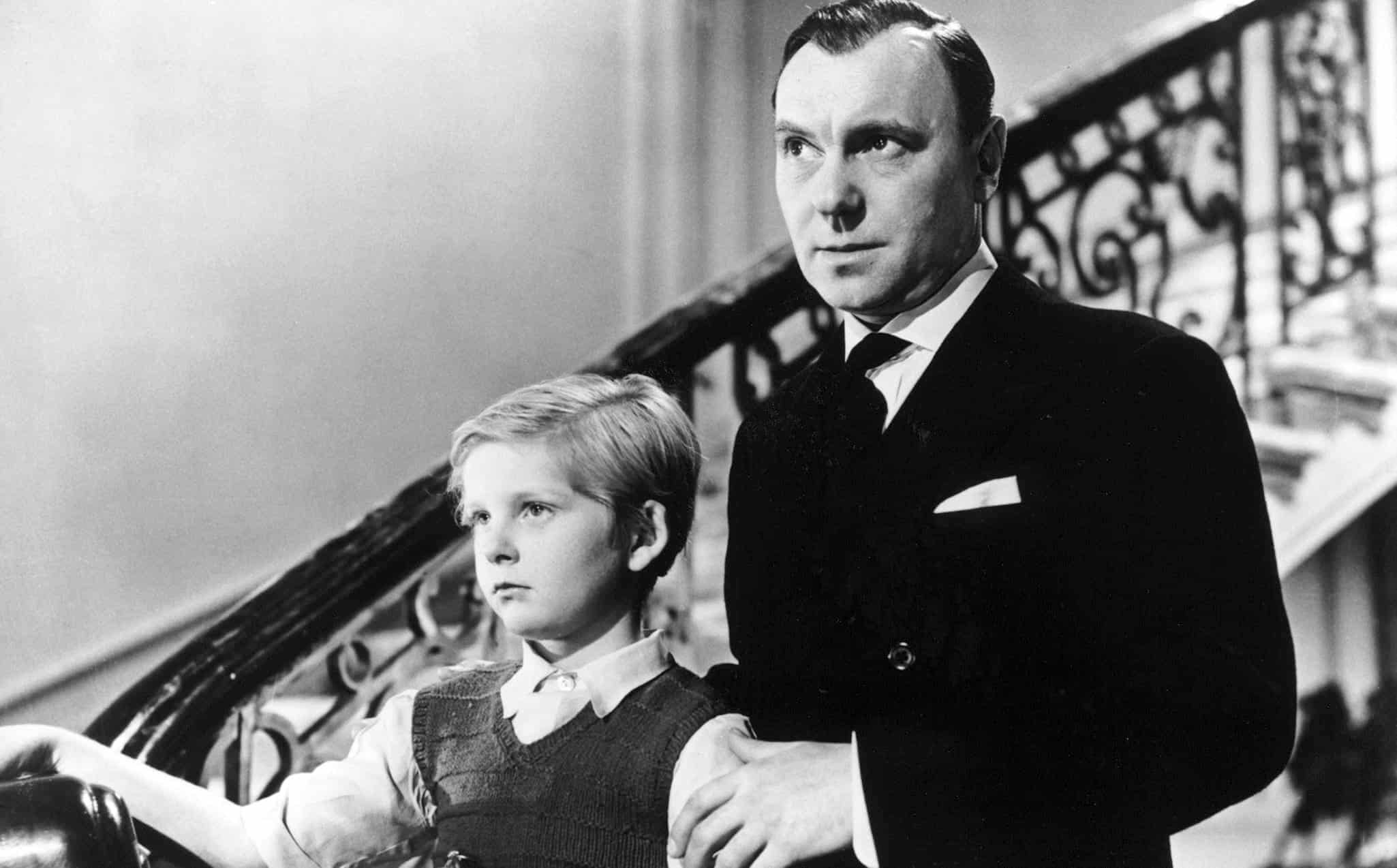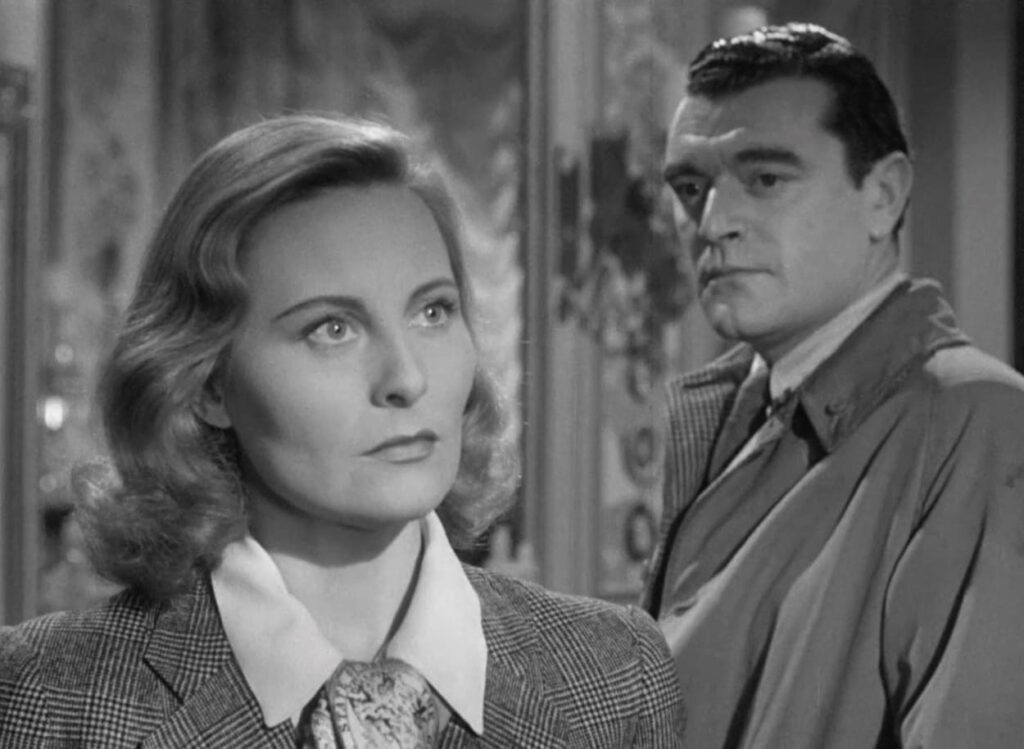Of the three films that writer Graham Greene and director Carol Reed made together, The Fallen Idol is the one that languishes at the back of the stage while The Third Man and Our Man in Havana soak up the applause. That’s probably fair, all things considered, but that doesn’t mean this 1948 movie should be written off.
It’s a highly intricate puzzle of interlocking parts with a plot about people trying to do the right thing, then failing, then trying to do the wrong thing, and then failing at that too. But the main driver is a young lad, Phillipe, the chatty and precocious diplomat’s son whose parents are so often absent that he’s formed a close attachment with the dynamic, charmingly capable butler, Baines, played by Ralph Richardson at full twinkle.
Baines’s marriage to the strict and no-nonsense Mrs Baines (Sonia Dresdel) is not a happy one and so when one day Phillipe happens upon the butler in a local cafe midway through a teary conversation with a pretty young woman called Julie (Michèle Morgan), we see an affair in progress. Phillipe doesn’t, and so he buys Baines’s explanation that Julie is his niece.
Until – massively truncating the story here – matters come to a head in the embassy one night, and there’s a blazing row between Baines and his wife, during which Phillipe witnesses, or thinks he does, Baines pushing his wife to her death down the stairs.
The story shifts suddenly from being about an impossible relationship with duty on one side and love on the other – Brief Encounter plus bratty kid – to one of mistaken perception, with Phillipe as the unreliable narrator par excellence and Baines as the potential victim, paying for one crime (adultery) by being accused of another (murder).
Reed shoots it all from the child’s perspective, with the camera down low when Phillipe is on a level with the adults, and up high when Phillipe is peeking around a corner from halfway up the stairs. He occasionally breaks out the wonky “Dutch” angles to suggest a bit of disorientation, and he lets the brilliant cinematographer Georges Périnal (who worked with Jean Cocteau, René Clair and Powell and Pressburger) have his way now and then with stark lighting, most notably when Phillipe runs away after Mrs Baines’s accident and is found on the dark streets shoeless and in his pyjamas by a friendly policeman who takes him to the station.
Reed shoots it all from the child’s perspective, with the camera down low when Phillipe is on a level with the adults, and up high when Phillipe is peeking around a corner from halfway up the stairs. He occasionally breaks out the wonky “Dutch” angles to suggest a bit of disorientation, and he lets the brilliant cinematographer Georges Périnal (who worked with Jean Cocteau, René Clair and Powell and Pressburger) have his way now and then with stark lighting, most notably when Phillipe runs away after Mrs Baines’s accident and is found on the dark streets shoeless and in his pyjamas by a friendly policeman who takes him to the station.
Here, in one of several light-hearted interludes designed to take off the pressure, there’s a funny interchange with a tart with a heart, played by the reliably on-the-money Dora Bryan. Later, back at the embassy, there’ll be another, as the two cleaning ladies (Dandy Nichols and Joan Young) cluck to each other about the nasty business on the stairs and the appropriateness of using smooth marble in the construction of staircases.
As the net tightens around Baines there’s a steady increase in tension and shot length gets shorter, especially once the police arrive at the embassy. There are clearly too many cops purely for plot purposes. Instead, Reed uses them as embodiments of the various deceptions and misreadings in play. As they literally circle Baines, Julie and Phillipe, Reed flicks repeatedly from one to the other, suggesting a doomed interconnectedness.
Reed would do something similar a year later, with The Third Man, but it’s hugely effective here as well, and the house itself, a massive place of chequered black and white tiles and starkly dramatic décor has something of the courtroom about it.
Henrey was apparently a terrible actor and Reed had a lot of trouble getting a decent performance out of him, relying on careful editing to hide Henrey’s deficiencies. You cannot tell. All the performances seem excellent, with Dresdel deserving a prize for selflessness as the unbending Mrs Baines, a woman you might wish to be at the wrong end of a grim accident. All while it’s also a technically fabulous film, it is in the end not Reed’s film but Greene’s, his plot twists coming one after the other and still threatening to do their worst even as a happy ever after appears to be coming over the horizon.
The Fallen Idol – Watch it/buy it at Amazon
I am an Amazon affiliate
© Steve Morrissey 2023


